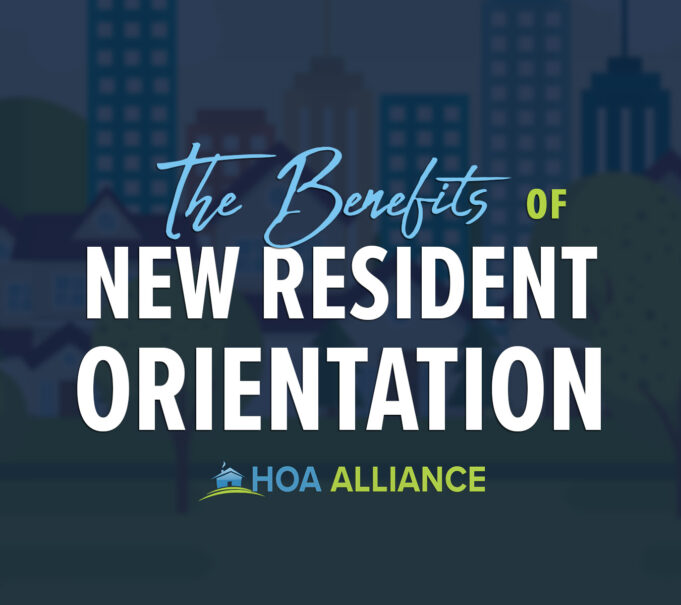As a homeowner’s association (HOA), one way to foster a sense of belonging and establish a strong community is through a comprehensive New Resident Orientation program. This program serves as a valuable platform to welcome and educate new residents about the community’s rules, resources, and opportunities. In this blog post, we will explore the benefits of implementing a New Resident Orientation and how it contributes to building stronger, more cohesive neighborhoods.
Welcoming and Informative Environment:
New Resident Orientation provides an opportunity to extend a warm welcome to newcomers and create a supportive environment from the start. It allows residents to meet their neighbors, board members, and key community stakeholders, fostering a sense of belonging and connection. Through informative sessions, newcomers gain valuable insights about community amenities, facilities, and services, enabling them to navigate and engage with their new surroundings more effectively.
Understanding Community Rules and Expectations:
Every community operates on a set of rules and regulations designed to maintain harmony and ensure the well-being of its residents. New Resident Orientation serves as a platform to educate newcomers about these guidelines, promoting a clear understanding of community expectations. By familiarizing new residents with these rules, including property maintenance standards, architectural guidelines, and common area usage policies, the orientation sets a foundation for harmonious living and a shared sense of responsibility.
Enhanced Communication and Collaboration:
Effective communication is vital for any thriving community. New Resident Orientation provides a forum for residents to learn about the various communication channels within the HOA, such as newsletters, community websites, and social media groups. By connecting new residents with existing communication networks, the orientation promotes active engagement and participation in community affairs. It also encourages collaboration among residents, fostering a culture of sharing ideas, addressing concerns, and working together to enhance the community.
Awareness of Community Resources and Activities:
HOAs often provide a range of resources and organize community activities aimed at enhancing the quality of life for residents. New Resident Orientation presents an excellent opportunity to highlight these resources and upcoming events. Whether it’s recreational facilities, educational programs, neighborhood watch initiatives, or social gatherings, informing new residents about these offerings encourages their active involvement and contributes to the overall vibrancy of the community.
Building Relationships and Networking:
A New Resident Orientation program facilitates connections between new and existing residents. By creating a welcoming environment where introductions can be made, friendships can form, and support networks can develop, the orientation encourages the building of relationships that go beyond property boundaries. Stronger social connections within a community often lead to a greater sense of security, shared interests, and a higher level of engagement among residents.
In Conclusion:
New Resident Orientation plays a crucial role in cultivating a strong and cohesive community. By providing a welcoming environment, educating new residents about community rules and resources, enhancing communication, promoting active participation, and fostering relationships, the orientation sets the stage for long-term community success. HOAs that prioritize and invest in New Resident Orientation programs create a sense of belonging, empower residents with valuable knowledge, and ultimately build stronger, more vibrant neighborhoods.
Remember, a warm welcome today creates a strong community tomorrow! For more information on community building and HOA resources, visit HOAAlliance.org .











